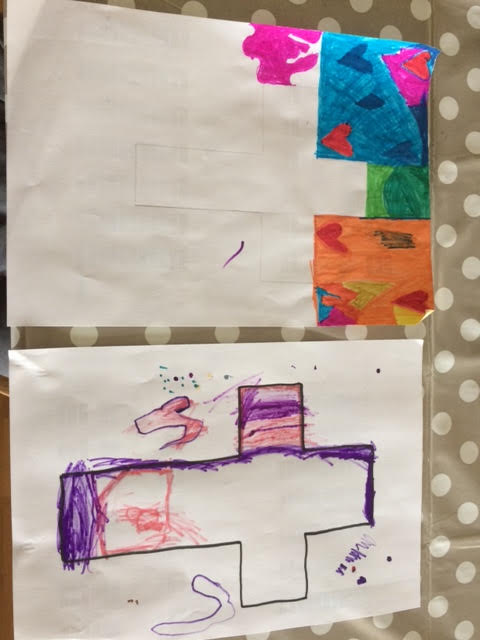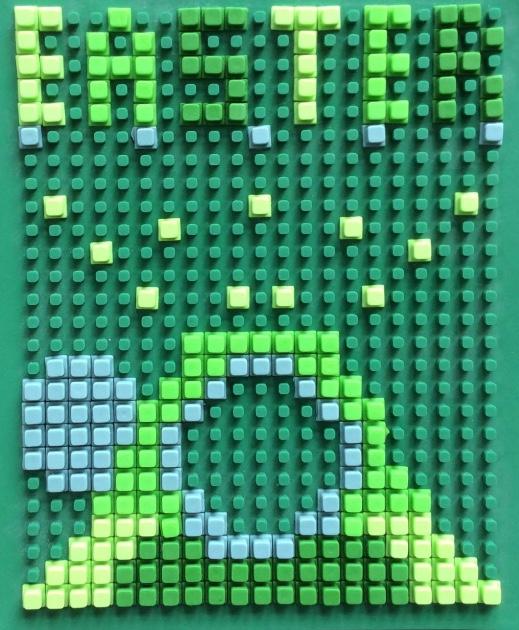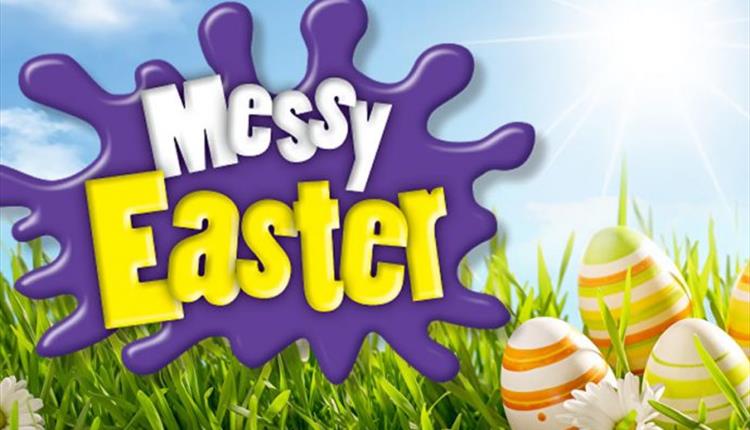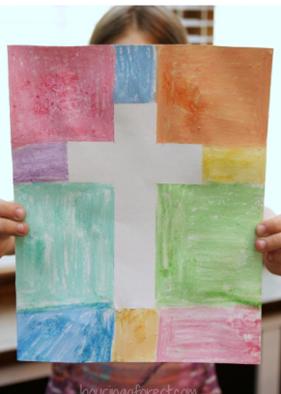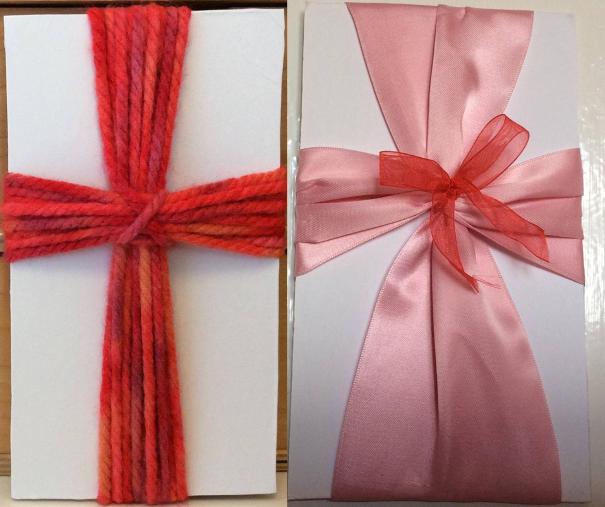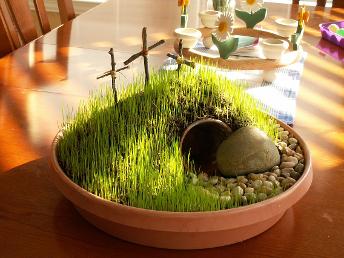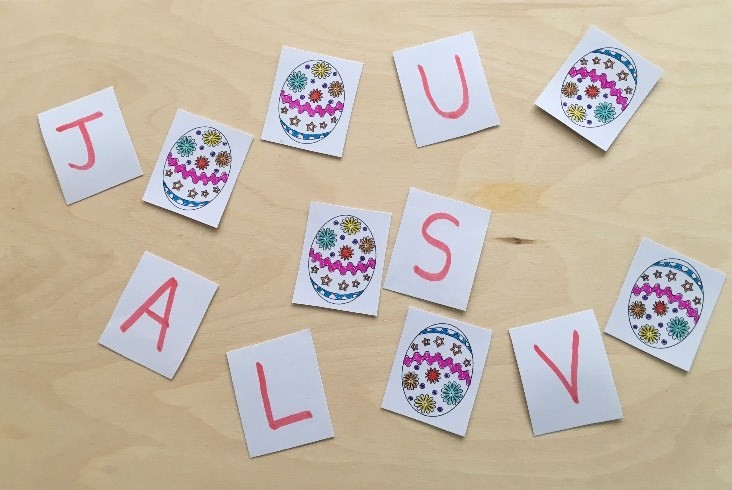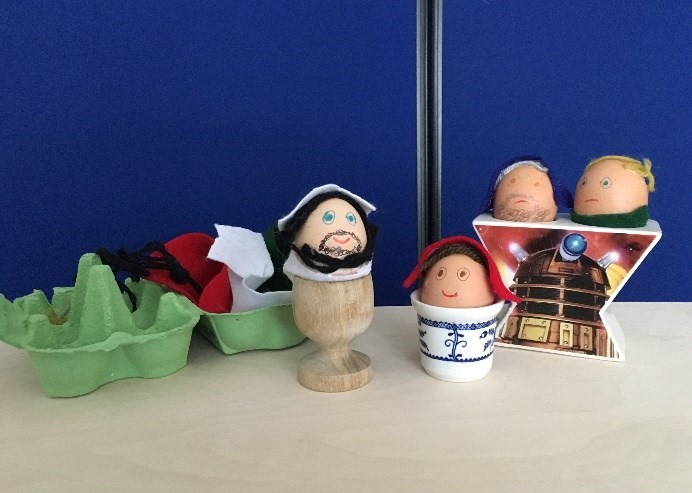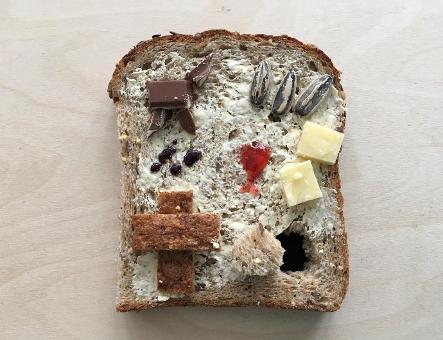Thank you for sending in pictures of the crafts you've been making. Great to see these! Hope you are all enjoying your Easter. The first craft (which is still in progress) came all the way from Switzerland (some of you will know who sent it).
Some ideas for you to try at home:
1. Easy Cross Craft
2. Wool or Ribbon Cross
(Thank you to Carla for these first two ideas)
3. Easter Garden (in your garden)
We often make Easter Gardens at our Good Friday. They usually look a bit like this:
We had a go at making one in our garden at home using things we could find. It only took about 15 mins!
Talk about how amazed the disciples were to discover that the body had gone. Consider all the explanations they might have come up with.
You may already have had your own Easter egg hunt, but why not try this second one that links to today’s story?
You will need: a set of twelve Easter egg shapes cut out from card or paper (clipart is a good source of templates); felt-tip pens if you wish to colour the eggs; a marker pen; some clever ideas of where to hide the eggs around the house
On the back of each egg shape, write one letter from the sentence: ‘Jesus is alive.’ You might like to make enough sets for everyone involved so they can find a sentence each, or if there are non-readers in your household, draw differently coloured dots on the back of each egg and say there are twelve colours to find. A further possibility that avoids reading letters would be to draw twelve differently coloured stickpeople representing some of Jesus’s friends who were hiding in the upstairs room on that first Easter evening.
Talk about the good news that Mary and others had been spreading already during the first Easter Day, but also why you think most of the friends of Jesus were still scared.
5. Resurrection Egg People
When Jesus met his disciples in the upstairs room, he breathed his Holy Spirit on them. They were being offered a brand-new start as God’s forgiven people, filled with the Spirit of God.
You will need: some dirty copper coins; white vinegar; table salt; shallow bowls; water; gloves; cloths/ kitchen roll
Put your dirty pennies in the bowl and cover them with salt. Pour over a little white vinegar and watch it fizz! Wearing gloves, rub the salt and vinegar mix over both sides of the pennies. Take the pennies out and wash off the mixture in clean water. Rub the pennies so they shine. Alternatively, you might like to search for some objects in the home that are tarnished and dirty and challenge the family to clean them up to become bright and sparkling new again.
Talk about Easter being God’s gift of a brand-new start for everyone who believes in Jesus.
7. Eat the Story!
This edible activity is a way to recap on the whole of the Holy Week story that leads up to the mystery and miracle of Easter Day.
You will need: a slice of bread; margarine or butter; chocolate broken into chunks; jam; sunflower seeds (or something else that is edible and leaf-shaped); dark food colouring; butter/margarine; cheese cut up into small chunks; butter knives
Put on to your slice of bread a series of edible objects that link to the Holy Week story. Lightly spread butter or margarine on to your bread so the objects stick. Arrange bits of chocolate into the shape of the donkey from Palm Sunday and then put next to it sunflower seeds (or something green and edible) to represent the palm leaves. Drop some dark food colouring on to the bread like footsteps to remind you of how Jesus washed his disciples’ dirty feet. Spread and shape a small blob of jam into the cup of wine that they drank at the last meal and beside it put two chunks of cheese to represent the bread they shared. Use some of the crust from the slice of bread to make a small cross and then beside it cut a hole and use the cut-out piece as the stone that was rolled away from the empty tomb.
Talk about (as you eat it) the story of Jesus in his last week and how he loved his friends right to the very end.
Celebration
The Messy Church Easter celebration story, told by Martyn Payne, will be available live on the Messy Church BRF Facebook page at 5.00 pm (UK time) on Easter Sunday 12 April 2020. Activities 3-7 (above) will be picked up in the celebration.
Alternatively you could have your own celebration time at home.
Here are some videos you may find useful for your own celebration. If we had been able to have a Good Friday Messy Church I was going to read "Dave the Donkey."
